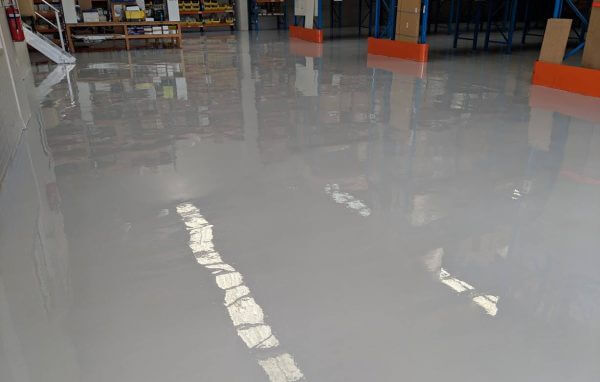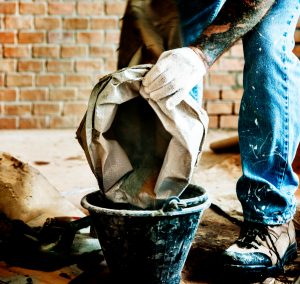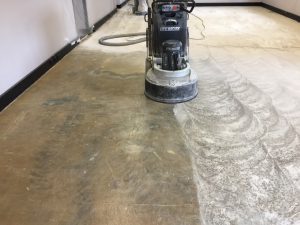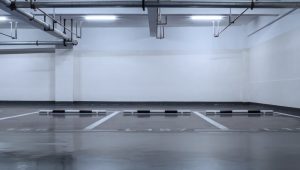Epoxy flooring is one of the most dependable and long-lasting floor commercial intervention for urban and business functionalities today. Epoxy floor treatments are in considerable popularity owing to the fact that they are virtually indestructible, as well as visually appealing. It has gained its mainstream appeal because of how it exudes elegance in a given space, and is economical and sustainable in nature.
Epoxy flooring is very modestly priced when compared to the long-term performance it provides. However, epoxy floor difficulties can occur and may hinder you from achieving its maximum potential, particularly when the material is applied and handled incorrectly. Because of the failure of an epoxy coating, the flooring does not provide the insulation and longevity that are often associated with this type of flooring. Furthermore, epoxy is incredibly difficult to remove once it has been applied. Because of this, if the treatment isn’t executed properly, you could be left with a highly unappealing floor that is extremely impossible to get rid of thereafter.
To be considered an epoxy flooring product, the product must contain both resin and an activator. Due to the fact that epoxy flooring is a two-part product, professional installation is required in order to achieve the optimal ratio. The product could result in some defects on your flooring if it is applied by someone who is not familiar with the product. Even installation by skilled epoxy flooring experts might go awry as a result of normal wear and tear, weather conditions, and inadvertent mistakes during installation.
And to give you a glimpse of what awaits your area once you decide to customise your flooring solution, you might first want to check out these five things you can avoid when you leave epoxy flooring to experts;
Epoxy Floor Peeling
There are a multitude of factors that can induce the epoxy flooring to peel away from your floors. The most typical causes of this include incorrect epoxy preparation, application of the epoxy when the ambient is too hot or too cold, or application of the epoxy when the humidity is too great. Peeling and poor structural rigidity can also be caused by poor subsurface fabrication, the failure to remove contaminated materials such as grease, oil, and solvent, the use of an incorrect resin to hardener ratio, the use of improper mixing techniques, expansive temperature variations, and the presence of moisture trapped in the subsurface, among other things. The floor surface must be clean and free of oil, grease, and other foreign matter. If this is not done, the epoxy will peel away from the floor as it cures, resulting in “fisheyes” or circular holes in the finished surface.
For resin and hardener to set properly, the proper conditions must be met. If the humidity level in your place of business has been high, moisture may flow out of concrete floors beneath your epoxy coating. The accumulation of moisture can result in a variety of disorders, including peeling. Changes in temperature may also result in condensation, which will exacerbate your moisture problem of your epoxy flooring even further.
Floor Discolouration
The presence of yellowish or uneven floors is indicative of epoxy flooring discolouration. Because resin and activator are such difficult ingredients to work with, discoloration is a regular issue. The pot life of an epoxy is the amount of time it takes for the combined resin and hardener to increase in viscosity by one-half. Hardener, as the name implies, is a substance that helps to solidify resin.
Installers who delay applying the epoxy for an extended period of time, potentially surpassing the pot life, risk having the resin fail to adhere properly. It will also show signs of discolouration or yellowing as well. Even if the combination appears to be workable, if it is let to sit longer than the recommended pot life, it will most certainly produce a low-quality product. Another reason that could lead to this occurrence is making the mistake of using a wrong hardener. When it comes to hardening, every resin requires the proper balance of activators. The use of the incorrect type or amount of hardener during the application process will result in a reduction in the color and consistency of the finished epoxy flooring.
If your epoxy flooring is the wrong color or has yellowed, it’s possible that an activator fault is at the root of the problem. Also, when chemical exposure is permitted, variation in colours take place. Carbon monoxide and other chemicals can react with new epoxy to discolor it if they are exposed to it. According to the type of chemical used, your epoxy floor may become yellowed or change color to a different hue. Allowable UV exposure also attributes to this. Even if the resin has already hardened, sunlight or ultraviolet light will cause it to darken. Depending on how often sunlight shines on the resin, you may observe a pattern or different hues of discoloration on the surface. If your epoxy was exposed to direct sunlight while it was being applied, you may notice discolouration and air bubbles in the finished product as a result of the exposure.
Air Bubbles Beneath the Epoxy
It is also possible to get air bubbles in epoxy flooring if you are applying it in direct sunlight or when the temperature is too chilly. A common cause of these problems is the application of epoxy on concrete that is excessively porous. The porous concrete will need to be thoroughly readied in order for the epoxy to adhere effectively to prevent this issue from occurring.
If you don’t properly mix the epoxy, you may also notice air bubbles in the mixture. When using a paddle mixer, mixing too quickly can result in air being trapped in the epoxy flooring. When the epoxy is applied, air bubbles will emerge in the finish as a result of the previous step. Keep the paddle mixer from being pumped up and down or from running too rapidly near the surface. This will cause air to be drawn into the epoxy, resulting in a finish that is unsatisfactory.
Fish Eye
When it comes to fish eyes, they are typically produced by residual silicone or oil that was not completely removed during the surface preparation process for epoxy flooring. They can occur as a result of applying a top coat over primer that has not yet dried completely. Fish eyes can be avoided with proper and meticulous preparation. It is frequently caused by a contamination of the concrete or a preceding coating, which is usually produced by an oil or silicone. Alternatively, it might occur when applying a second coat and failing to notice the re-coat window.
Using proper surface preparation and ensuring that all contaminated areas are thoroughly cleaned before to installation are the most efficient ways of avoiding this situation. If the re-coat window is missed, you’ll have to sand and tack wipe the existing coating to get it back to its original condition. If the fish eyeing occurs while you are applying the coating, continue to back roll until the problem is resolved. In certain cases, if the problem is limited to a small region, you may be able to correct it after the coating has hardened. If the problem is widespread, it may be necessary to remove the epoxy flooring coating and then clean and degrease the concrete.
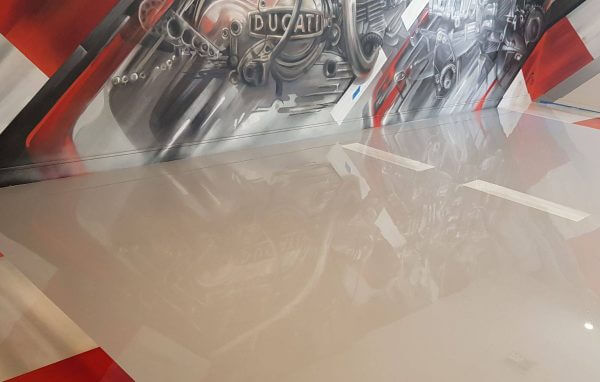
Floor Blistering
Blisters and craters are the second most frequently encountered epoxy flooring problems. Blisters are enormous air-filled bubbles that form when air is trapped inside them. Craters, on the other hand, are the polar opposite. They arise as a result of the popping of bubbles, which leaves an indentation in the epoxy surface. Outgassing from the subsurface can occur as a result of improperly produced concrete that is porous and contains air. This can result in enormous blisters and craters on the surface.
When the freshly applied epoxy begins its curing or exothermal action, the trapped air in the concrete cavities reacts and causes a chemical reaction. Heat is produced as a result of the chemical reaction. This causes the moisture in an air pocket to escape, causing it to expand. Blisters or popped craters are formed as a result of the air being forced to the surface of the skin.
Causes of Epoxy Flooring Failure
Poor Surface Preparation
The instructions that come with an epoxy coating kit purchased from any epoxy provider or major retailer will often instruct the do-it-yourself user to either rinse the floor thoroughly or erode it with muriatic acid. Nevertheless, cleaning is not sufficient on its own. Even while it is a fair approach for preparing the concrete surface, washing it, and acid etching it, there are times when it does not work. Acid etching is an option worth considering for surfaces that have openings that are open and easily reachable enough to enable the acid to react and remove the laitance, which is the thin cement paste that sits on top of the surface. However, acid etching will not be effective on hardened concrete that are not permeable, stained with oil, coated, or exposed to pollutants like as wax, tyre shine, or other upkeep lubricants. Epoxy flooring coatings do not cling to flat surfaces or surfaces that have not been prepped. Even if your concrete slab is rough and so has a textured surface, this does not indicate that the concrete surface will absorb the epoxy coating. Before the administration of an epoxy coating, it is needed that ALL concrete surfaces undertake surface preparation utilising a concrete refurbishing machine, such as concrete floor crushers and polishers. This requirement applies to both interior and exterior concrete surfaces.
Contaminated Concrete
Tainted concrete is another problem that frequently leads to the degradation of epoxy floor coating. Even if the concrete is properly prepared, certain contaminants such as saturated fats, silica, siloxane, and lacquer can infiltrate to a depth that makes them capable of affecting the adhesive capabilities of subsequent applications. To resolve this issue, you may choose to either cut out and replace the significantly contaminated concrete areas or apply strong shot blasting of a CSP-4 or higher strength on occasion. Alternatively, you could choose to treat the issue by using heavy shot blasting or simply employ epoxy flooring professionals.
Combining the Epoxy Too Quickly or Too Forcefully
When mixing the epoxy, it is important to avoid mixing the epoxy too quickly or too forcefully, as this will introduce more air bubbles into the solution before it is poured. In most cases, this is the result of overzealous mixing using a drill that has been set at a high speed. When utilising a drill that comes equipped with a stirring spatula for epoxy flooring, it is best to keep the speed of the drill on the slowest level possible for your own protection.
Inaccurate Proportions Utilized
Both the epoxy resin and the hardener have to be in the right proportions. Because this complex ratio changes from product to product, the best course of action is to rely on the installation services of an epoxy flooring expert. Your floors will not properly cure if there is not enough hardener, which may result in blisters or other concerns. Installers will be forced to work quickly or apply an epoxy that is too sticky to lay down in a flat coat if there is an excessive amount of hardener.
Unreasonably Hasty Application
If the person who applied your epoxy flooring was in a hurry, you may see air bubbles in the finished product. Although epoxy flooring specialists work quickly in order to prevent the resin from hardening before it is applied, they do it very carefully in order to prevent the formation of bubbles. It is feasible to expedite a work even between the coats of epoxy that are being applied. If you do not allow sufficient time for each layer to dry, you run the risk of adding fresh epoxy on a base that has not yet fully dried.
Extreme Amounts of Humidity
When epoxy floor coatings are installed on a surface on a day that has a high relative humidity, this can have a negative impact on the strength properties between the layers of epoxy coatings as well as the inter-coat adhesion. An excessive amount of humidity would almost probably lead to debonding, cloudiness, as well as hasty and incorrect curing. Before continuing with the application of a coating, installers are required to constantly keep in mind the current weather conditions that are taking place.
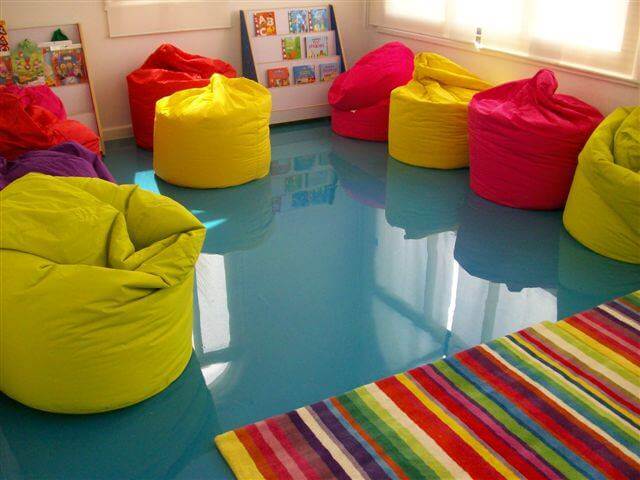
Poor Adhesion Force
A good epoxy coating will have strength properties that are greater than the pull strength of the concrete. This is the defining quality of a good epoxy floor coating. Some epoxy coating solutions are not up to the task since the paint they use may just be epoxy-fortified acrylic paint that has an excessive amount of fillers. Epoxy is made substantially more affordable by these kits; nevertheless, these kits do not offer good strength properties and applications that are able to resist regular wear and tear; therefore, the application of an industrial-grade epoxy coating is strongly suggested.
There are a lot more of possible setbacks that await an epoxy flooring project that lack adequate expertise and materials. And you wouldn’t want your projects turned into a total disaster, would you?
RenuCrete Sydney has got you covered from epoxy flooring, flake epoxy garage flooring, garage epoxy flooring and all your other epoxy needs. Our well-articulated professionals in the field will surely be delighted to cater your inquiries.
Get a quote for our epoxy flooring services by filling out the form below:

